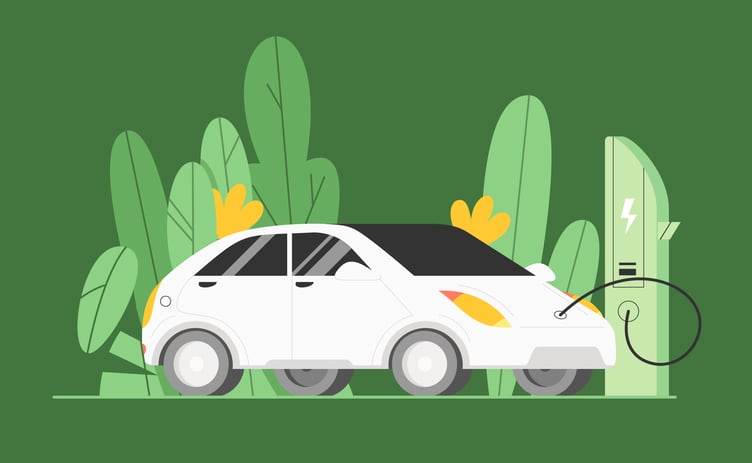In 2018, the Isle of Man only had 79 registered Electric Vehicles (EVs). By 2024, EV ownership has grown by more than 1,176% to nearly 1,500 vehicles. Electric cars and hybrids now make up over 5% of cars on our roads. So why are so many of us going electric?
The market for EVs is becoming more accessible, with new research highlighting that the price gap is closing compared to your traditional petrol or diesel car, and in some cases EVs have reached price parity, particularly in the growing second-hand market.
A recent report from CarGurus found that used combustion engine models are on average 10% more expensive than equivalent electric models of the same age and mileage from the same manufacturer.
EVs are also significantly cheaper to run, with their simpler design resulting in lower maintenance costs. They allow access to favourable electricity tariffs for your entire home and are more affordable to charge.
Charging a medium-sized electric car at home can cost around half the price of filling up an equivalent petrol vehicle. Using Isle of Man prices at the end of February 2025, charging at home costs around 7p per mile, while a diesel or petrol vehicle can cost around 15p per mile to fuel.
The island’s compact size and widely available public charging infrastructure means range is unlikely to be an issue here. Manx Utilities has closely met the European standard, with one public charger to every 11 vehicles, ensuring that even without home charging, EV ownership can be practical on the island.
An EV commercial electricity tariff incentive is available to businesses wishing to support their workforce's electric vehicle charging needs, while support to install EV infrastructure can be obtained via the Department for Enterprise Business Emissions Saving Scheme.
84% of Manx public in 2021 considered environmental reasons as a factor when considering a purchase.
EVs are almost twice as energy-efficient and can reduce lifecycle greenhouse gas emissions by approximately two thirds compared to an equivalent petrol vehicle.
When driven, EVs produce zero tailpipe emissions, reducing air pollution (and noise), and can help the Isle of Man lower its significant environmental footprint associated with transport - a sector which is the Isle of Man’s second largest emitter at 25%. Most emissions (80%) in this area are from driving cars.
Even when considering the electricity used to run an EV on the island is produced using fossil fuels, a Peugeot 208 running on petrol emits 1,500kg CO2 per annum, and the EV equivalent emits just 798kg CO2 over the same period with an average mileage of 7,000 miles.
If you have benefitted from a switch to an electric vehicle, or are a business that has transitioned to an electric fleet and wish to share your journey, the team at Net Zero Isle of Man would love to hear from you. You can get in touch with them at [email protected].

.jpeg?width=209&height=140&crop=209:145,smart&quality=75)


